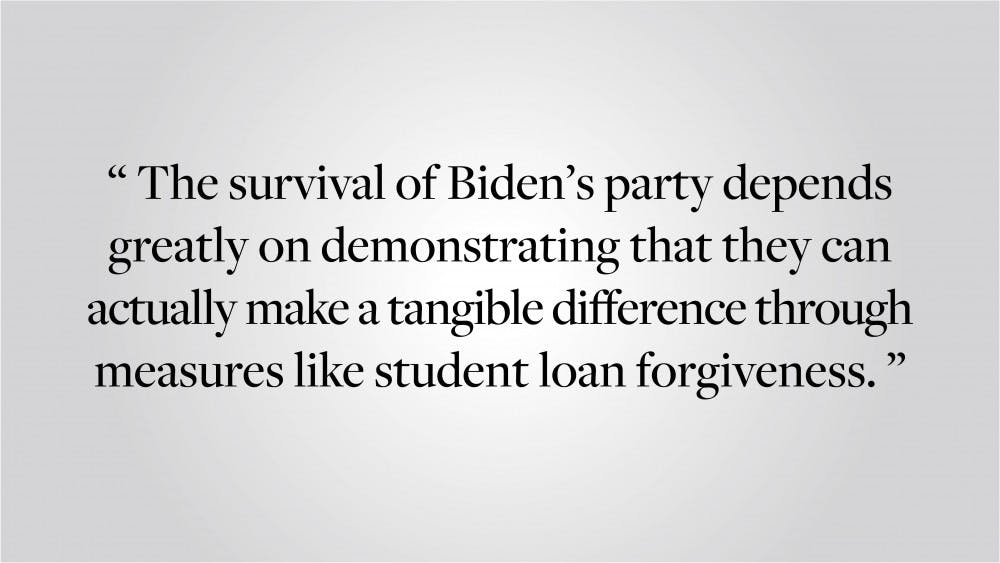“Welcome to Settle for Biden, the page where we recognize that Biden is bad but Trump is way worse. Now is not the time to be petty; now is the time to defeat Donald Trump and his dangerous agenda,” reads the caption under the first Instagram post of the account formerly known as @settleforbiden (now @path2progress). The account, now addressing an audience of 276,000 followers, was created by 19-year-old Illinois native Sam Weinberg, who formerly supported Bernie Sanders’ presidential campaign. During the primaries, Weinberg and throngs of other young voters rallied behind Senator Sanders’ progressive agenda, decrying Joe Biden’s characteristically moderate stances on issues such as health care and funding for law enforcement. However, when Sanders officially dropped out of the race in April 2020, it became increasingly clear to Weinberg, as well as other like-minded Gen-Z youth and millennials, that “settling” for Biden as the frontrunner was a necessary evil to prevent the far worse threat of a second Trump term.
When progressives were forced to say goodbye to the possibility of a Bernie Sanders presidency, so too went the greater likelihood of bold action on the student loan debt crisis. One of Sanders’ most compelling campaign promises was the cancellation of all $1.6 trillion of outstanding student loan debt held by approximately 45 million Americans. Meanwhile, although Biden’s campaign website features plans to improve today’s income-based repayment program and mend the Public Service Loan Forgiveness Program, it says nothing of outright cancellation. What Biden has since proposed in the realm of tackling student loan debt falls substantially short of sweeping debt erasure, offering just $10,000 in loan forgiveness per borrower. Now that Biden has taken office, however, the necessity of “settling” is irrelevant, and maintaining public approval will be entirely up to his achievements in office — namely progressive action such as eradicating student debt. More specifically, Biden must choose between taking such measures via executive action, which is enabled by the Higher Education Act of 1965, or congressional legislation. Given the inevitable uphill battle that significant student loan forgiveness will face in Congress, Biden has no choice but to pursue it through executive order to grant it any chance of success.
If the fight over the third coronavirus stimulus package was any indication, congressional legislation for wide-scale student loan forgiveness would be crushed beneath the weight of cross-party negotiations. For example, Senate Republicans’ characteristic frugality was on full display when they created a counter-proposal to the plan created by President Biden and congressional Democrats. The plan totaled $618 billion, a massive step down from Biden’s $1.9 trillion proposal, and notably featured just $1,000 in direct stimulus payments only for individuals earning less than $50,000 a year and joint filers earning less than $100,000. Importantly, the proposal excluded provisions for student loan borrowers. One might assume that such fiscal conservatism is limited to Republicans, but even some Democrats considered leaving many individuals and families who had previously received checks without relief by lowering the financial eligibility for the third round of stimulus checks. The final package eases such stringent restrictions, though there was still widespread confusion amongst Americans as to how they ended up receiving $2,000 total in coronavirus relief, as opposed to another separate round of $2,000 checks. If Biden and Congress had to wrestle with limitations on the amount and recipients of much-needed assistance after almost a year of a global pandemic, it is not hard to imagine that attempting a bipartisan resolution would hinder expansive student loan forgiveness.
Senate Majority Leader Chuck Schumer and other Democratic leaders in Congress are increasingly pressuring Biden to use his executive power to cancel the majority of student debt, and it is about time he listened. Biden achieved record turnout in the 2020 election when he drew in approximately 80 million votes, more than any other presidential candidate in U.S. history. This enthusiasm will not last if he does not use the power that the public endowed him with to implement meaningful policy. Come the 2022 midterm elections, how will Biden and congressional Democrats justify fighting to get progressives out to the polls if, after two years of unified government, little on their agenda was accomplished? The survival of Biden’s party depends greatly on demonstrating that they can actually make a tangible difference through measures like student loan forgiveness. The Settle for Biden team put it best when they said, “We settled, we hustled, we won. But we won’t be settling anymore.”

ADVERTISEMENT




